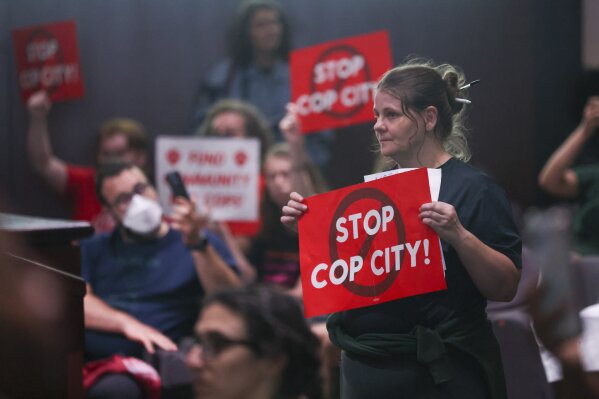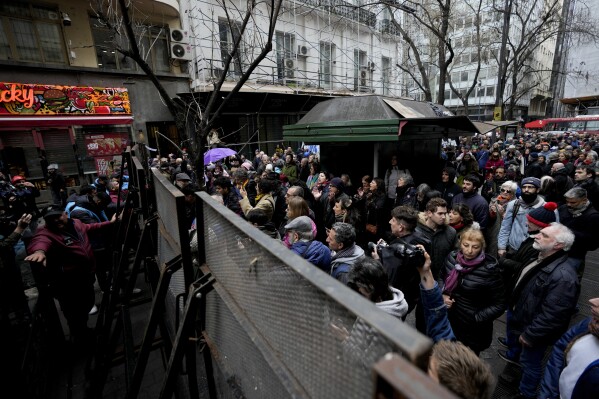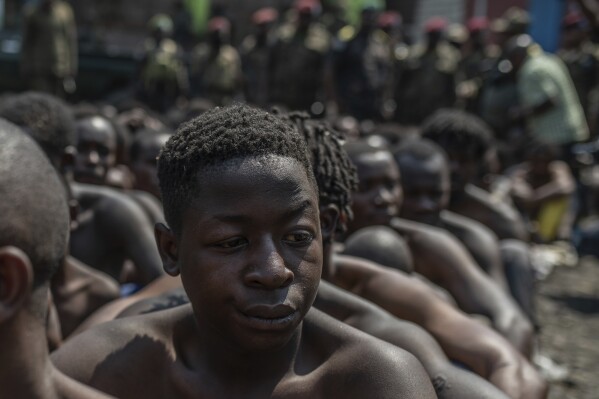New York police agree to reform protest tactics in settlement over 2020 response
NEW YORK (AP) — New York City’s police department has agreed to establish new policies intended to safeguard the rights of protesters as part of a legal settlement stemming from its response to the Black Lives Matter demonstrations in 2020.
The 44-page agreement, filed Tuesday in Manhattan federal court, requires the nation’s largest police department to deploy fewer officers to most public protests. It would end the NYPD’s practice of trapping and arresting large groups of demonstrators, a controversial tactic known as kettling.
The proposed changes must still be approved by a federal judge. But the agreement signals a likely resolution in the lawsuit filed by New York State Attorney General Letitia James in 2021, which detailed a pattern of civil rights violations committed by police as protests swept through the city following George Floyd’s death in May 2020.
“Too often peaceful protesters have been met with force that has harmed innocent New Yorkers simply trying to exercise their rights,” James said in a statement. “Today’s agreement will meaningfully change how the NYPD engages with and responds to public demonstrations in New York City.”
 61 indicted in Georgia on racketeering charges connected to ‘Stop Cop City’ movement
61 indicted in Georgia on racketeering charges connected to ‘Stop Cop City’ movement
 Protesters decry tribute for victims of leftist groups in Argentina’s 1970s political violence
Protesters decry tribute for victims of leftist groups in Argentina’s 1970s political violence
 Two military officers are arrested in Congo for leading a protest crackdown that killed 43 people
Two military officers are arrested in Congo for leading a protest crackdown that killed 43 people
In a video statement, Mayor Eric Adams, a former police captain, said the settlement struck an appropriate balance to “ensure that we are both protecting public safety and respecting protesters’ First Amendment rights.”
The 2020 protests saw chaotic street battles as riot police aggressively tried to quell demonstrations -- both peaceful and unruly -- with batons, pepper-spray and their own vehicles. Some protesters set police vehicles on fire and hurled bottles at officers. At several locations, protesters were penned in by police without warning, leading to hundreds of arrests for low-level misdemeanors, such as disorderly conduct or blocking traffic.
Under a tiered enforcement approach, the NYPD would be expected to accommodate street demonstrations, including those that obstruct traffic, unless they pose a direct threat to public safety or critical infrastructure.
For most protests, the department will be required to dispatch officers from its Community Affairs Bureau, rather than its specialized forces, with the goal of “communicating with protesters, understanding the aims of protest organizers.”
“The NYPD has historically policed protests by sending as many as officers as they possibly can,” said Corey Stoughton, an attorney at the Legal Aid Society. “That kind of overwhelming force and presence that we saw in 2020, which escalated violence with protesters, is a thing of the past.”
The settlement also covers separate lawsuits brought by the Legal Aid Society, the New York Civil Liberties Union and other private attorneys, which were combined with the Attorney General’s lawsuit. Plaintiffs are expected to receive a monetary award, which has yet to be announced.
The settlement requires the city to pay $1.6 million to the state’s Department of Investigation, which will help oversee the agreement with other parties, including police leaders and civil rights groups.
Disclaimer: The copyright of this article belongs to the original author. Reposting this article is solely for the purpose of information dissemination and does not constitute any investment advice. If there is any infringement, please contact us immediately. We will make corrections or deletions as necessary. Thank you.





